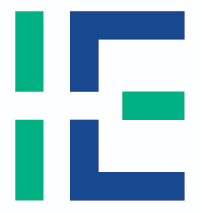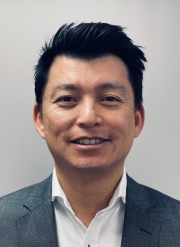Associate Professor Sze-Yuan Ooi | Connected Health, Clinical Lead
For close to a decade, cardiologist A/Prof Sze-Yuan Ooi was responsible for implanting cardiac devices in as many as 300 patients a year. He was also responsible for tracking the performance of those devices, typically via a remote monitoring device that flashed intermittently on patients’ bedside tables while feeding information back to the clinical team. The device was hugely beneficial from a clinical standpoint, but often a source of stress for patients who worried about the possible significance of every flash. Now, Sze-Yuan aims to help bridge the gap between the patient experience and the technical solutions put forward by ‘awesome engineering’ through his contributions to the IHealthE Connected Health program.
What excites you about IHealthE?
I remember the first time I had a tour of Biomedical and Mechanical Engineering; I was absolutely blown away. Their capabilities, the equipment, the technology and knowhow - it was next level! It’s great that IHealthE is bringing patients, clinicians and health care administrators together with researchers and engineers and all their awesome ideas. There's an enormous amount that we can learn from each other.
What progress have you seen in the TCC program since it began?
We’ve come a long way. We built an app, trialled it and showed that it reduced cardiac readmissions by 50 per cent. Then the pandemic happened. From a technical point of view, that’s had a positive effect in that now there's general acceptability of what we're doing, and everyone is saying 'Well, of course, this makes sense!'. Our early results and the shift in acceptance of tele-health has facilitated wider engagement in our activities and future plans.
What processes have you put in place for engaging with clinicians?
We are working closely with the clinicians to build a uniform process that enables us to understand the clinicians' point of view, that communicates to them what an app may or may not be able to offer them, and that considers what needs to happen for the app to be embedded in their usual clinical flow. There have been lots of learnings through TCC-Cardiac and TCC-COVID. We have developed a fairly detailed process that builds in all those thoughts and requirements from the outset, so the tech team have got something solid they can then build from.
What goals have you got for TCC into the future?
Ultimately, we want to make this very modular. At the moment, we've been very disease-specific, but patients don't always have one specific disease, and they don’t necessarily have the same needs as another person with the same disease. The TCC model encompasses many different functionalities, different types of physiological measurements, medication compliance, exercise programs, psychological supports, and educational resources – so instead of having an app for heart failure patients and an app for people with COVID-19 – we want to have one app that clinicians can use to prescribe the functionality their patient requires, in the same way they prescribe medications. It's personalised medicine, but in the form of a personalised app to address the individual patient’s conditions and needs.
What are your ambitions for the Connected Health program?
Connected Health is about breaking down the silos in health. Currently, we're all discrete entities. The hospital system is separate to my private consulting room system. The GPs are all separate. Patients don't even have information about themselves. So what we have now is ‘disconnected health’. By itself, TCC remote monitoring is a great solution for supporting patients, but really it's just a small piece of the grander ambition of breaking down all those silos and having an integrated digital system, with appropriate privacy and security, where anyone in a patient's care stratosphere is able to access the information they need. Imagine how much better the patient's care and outcomes would be if everyone who was looking after them was on the same page!

